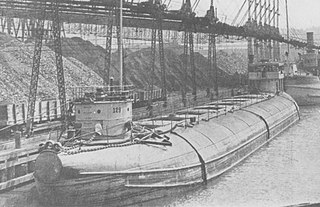
USS Essex was an Enterprise-class wooden-hulled armed naval steam sloop of war. She was built between 1874 and 1876 by Donald McKay at the Kitter Naval Yard of East Boston, Massachusetts. She was commissioned on 3 October 1876 by the United States Navy. On 23 December 1930 Essex was sold for scrap, and on 14 October 1931 she was taken to the beach just outside Duluth Harbor where they set fire to her; she eventually burned to the waterline. On 14 April 1994 the remains of Essex were listed on the National Register of Historic Places. She is significant because she is the only known remaining ship built by master shipbuilder Donald McKay.
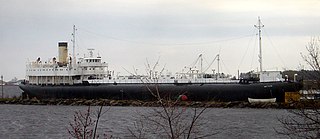
SSMeteor is the sole surviving ship of the unconventional "whaleback" design. The design, created by Scottish captain Alexander McDougall, enabled her to carry a maximum amount of cargo with a minimum of draft. Meteor was built in 1896 in Superior, Wisconsin, United States, and, with a number of modifications, sailed until 1969. She is now a museum ship in the city of her construction.
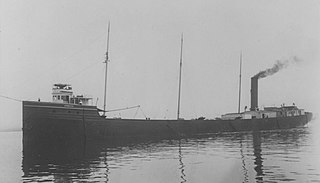
The SS Appomattox was a wooden-hulled, American Great Lakes freighter that ran aground on Lake Michigan, off Atwater Beach off the coast of Shorewood, Wisconsin in Milwaukee County, Wisconsin, United States in 1905. On January 20, 2005 the remnants of the Appomattox were listed on the National Register of Historic Places.
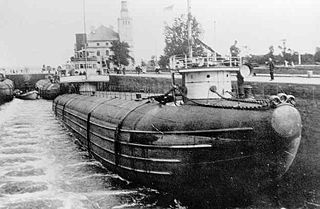
The Thomas Wilson was a whaleback freighter built in 1892 and used to haul bulk freight on the Great Lakes. The ship sank in Lake Superior just outside the harbor of Duluth, Minnesota, United States, on 7 June 1902, after a collision with the George Hadley. The wreck of the Thomas Wilson is one of the best remaining examples of a whaleback steamer, and it is also significant for the changes made in operating procedures at the Duluth harbor. The remains of the ship were listed on the National Register of Historic Places in 1992.
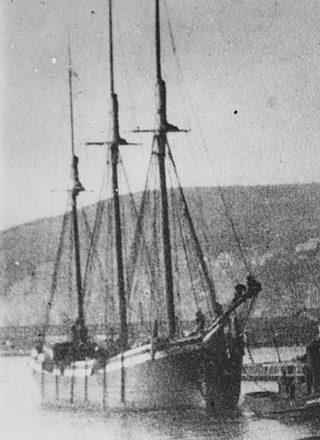
Samuel P. Ely is a shipwreck in Two Harbors, Minnesota listed on the National Register of Historic Places. She was a schooner that sailed the Great Lakes carrying iron ore, coal, and other bulk freight. She was built in 1869 and was a fairly typical example of the 200-foot schooner built in the 1870s, though she was reinforced for the demands of carrying iron ore.

The SS M.M. Drake was a wooden steam barge that towed consorts loaded with coal and iron ore on the Great Lakes. She came to the rescue of the crews of at least 4 foundering vessels in her 19 year career only to meet the same fate in her final rescue attempt. Drake sank in 1901 off Vermilion Point after a rescue attempt of her consort Michigan. Her rudder, anchor, and windlass were illegally removed from her wreck site in the 1980s. They are now the property of the State of Michigan. The rudder is on display as a loan to the Great Lakes Shipwreck Museum and the anchor and windlass are on loan for display to Whitefish Township Community Center. The wreck of Drake is protected as part of an underwater museum in the Whitefish Point Underwater Preserve.

America was a packet boat transporting passengers, mail, and packages between settlements along the North Shore of Lake Superior, an inland sea in central North America. Built in 1898, America sank in Washington Harbor off the shore of Isle Royale in 1928, where the hull still remains. The wreck was placed on the National Register of Historic Places in 1984.

SS Onoko was an iron hulled Great Lakes freighter. She was launched in 1882 in Cleveland, Ohio as hull number #4, and sank on September 14, 1915 in Lake Superior near Knife River, Minnesota. Onoko is thought to be the prototype for every single steel hulled Great Lakes Bulk carrier that ever sailed. These vessels made possible the cheap transport of bulk cargoes such as iron ore, coal and limestone. Her wreckage still remains on the bottom of Lake Superior and was listed on the National Register of Historic Places in 1992.

SS Robert Wallace was a wooden-hulled American bulk freighter that served on the Great Lakes of North America from her construction in 1882 to her sinking in 1902 on Lake Superior near the town of Palmers, St. Louis County, Minnesota, United States. On November 17, 1902 shortly after leaving Superior, Wisconsin with a cargo of iron ore, Robert Wallace sprang a leak and sank. Her wreck was found in 2006, and on October 14, 2009, the wreck of Robert Wallace was listed in the National Register of Historic Places.

The George Spencer was a wooden lake freighter that sank on along with her schooner barge Amboy on Lake Superior, near Thomasville, Cook County, Minnesota in the Mataafa Storm of 1905. On April 14, 1994, the wrecks of the Spencer and the Amboy were listed on the National Register of Historic Places.
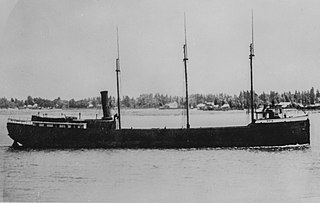
SS Ohio was a wooden hulled Great Lakes freighter that served on the Great Lakes of North America from her construction in 1875, to her sinking in September 1894 when she collided with the schooner barge Ironton which also sank in the collision. Ironton was being towed by the steamer Charles J. Kershaw, which was also towing the schooner Moonlight. Ohio was found upright in 2017, over 122 years after her sinking in over 200 feet of water off Presque Isle, Michigan. In March, 2023, it was announced that Ironton had been located in 2019. The researchers who discovered Ohio plan to nominate her for a listing in the National Register of Historic Places.

The Amboy was a wooden schooner barge that sank along with her towing steamer, the George Spencer on Lake Superior off the coast of Schroeder, Cook County, Minnesota in the United States. In 1994 the remains of the Amboy were added to the National Register of Historic Places.
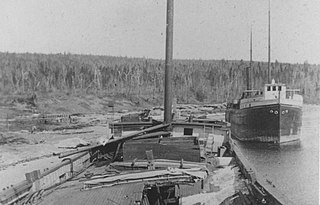
The AmboyandGeorge SpencerShipwreck Site is an archeological shipwreck site which consists of the wrecks of the wooden bulk freighter George Spencer and the wooden schooner-barge Amboy. Both vessels were wrecked during the Mataafa Storm of 1905. In 1994 the site was added to the National Register of Historic Places.

SS Selah Chamberlain was a wooden hulled Great Lakes freighter that sank in Lake Michigan in 1886, 6 miles (10 km) off the coast of Sheboygan, Sheboygan County, Wisconsin, United States after being rammed by the steamer John Pridgeon Jr. with the loss of five lives. On January 7, 2019, the wreck of Selah Chamberlain was listed on the National Register of Historic Places, and was given the reference number 100003288. She was the first shipwreck listed on the National Register of Historic Places in 2019.

SS S.C. Baldwin was a wooden-hulled steam barge built in 1871, that capsized in a storm on August 26, 1908, on Lake Michigan, off Two Rivers, Wisconsin, United States, with the loss of one life. On August 22, 2016 the remnants of S.C. Baldwin were listed in the National Register of Historic Places as reference number 16000565.

Thomas Friant was a wooden-hulled ferry that served on the Great Lakes from her construction in 1884 to her sinking in 1924. In January 1924, while gillnetting out of Two Harbors, Minnesota in Lake Superior, she was holed by ice, and sank with no fatalities. In 2004 her wreck was discovered in over 300 feet (91 m) of water in pristine condition. The wreck of Thomas Friant was listed on the National Register of Historic Places in 2019.





















